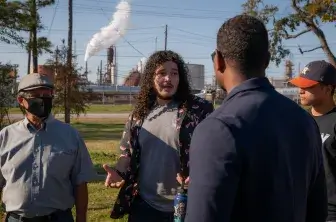Case study
Casa Pueblo: Supporting community energy independence after Hurricane Maria

In September 2017, two hurricanes, Irma and Maria, hit Puerto Rico and caused catastrophic infrastructure failures, impacting energy, communication, transportation, water supply, and wastewater treatment. Aging infrastructure and an unreliable, centralized electrical grid make Puerto Rico particularly vulnerable to energy outages. After Hurricane Maria, it took 328 days for power to be fully restored across the island.iDespite government promises and funding, recovery efforts were slow and poorly managed. Five years later, Hurricane Fiona again caused widespread outages and devastation. These tragedies and the grossly inadequate disaster response highlight years of government neglect and disinvestment.
Casa Pueblo, a community-based organization in Adjuntas, Puerto Rico, provides resources to some of the hardest-hit communities to improve energy systems on a local level.iiFounded in the 1980s in opposition to government mining operations, Casa Pueblo has developed into a cultural center that advocates for protection of resources and community self-management. In the rebuilding efforts following Hurricane Maria, Casa Pueblo helped to install solar panels on the rooftops of homes, grocery stores, and other community buildings. As installing solar panels can be a significant financial burden for many, these panels have been paid for by foundation donations and proceeds from locally grown coffee sold by the organization. This has helped to create a more distributed energy system that allows for power, even in an island-wide outage, and has increased community self-reliance, food security, and access to medical care during disasters.


